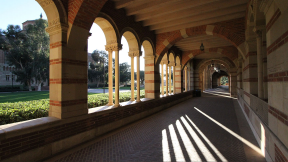What’s a Direct Subsidized Loan?

Senior Associate, JPMorgan Chase

A Direct Subsidized Loan – also called a Subsidized Stafford Loan or Subsidized Federal Direct Loan – is a type of federal student loan available to eligible undergraduates who’ve demonstrated financial need.
With this type of loan, you may get a lower fixed interest rate, compared to some other types of loans and flexible options when it comes time to pay the money back. If a Direct Subsidized Loan is an option for you, it could be worth considering if you need additional help to pay for college after you’ve made use of all of the scholarships and grants you can.
Why choose a Direct Subsidized Loan?
With a Direct Subsidized Loan, the federal government will pay the loan’s interest on your behalf while you’re in school at least half-time. They’ll continue to do that during a six-month grace period after you’ve left school, and anytime you’re on an approved deferment. Plus, you don’t have to make any payments while you’re in school at least half-time.
After you graduate and your grace period is completed, you leave school, or you fall below half-time status, you’ll need to start repaying your loan when your loan servicer contacts you. A Direct Subsidized Loan gives you multiple ways to do that, including repayment plans based on your income, so if your first job right out of college doesn’t pay so well, you can still make installment payments and keep your credit in good standing while you work towards paying back the loan.
Who’s eligible for a Direct Subsidized Loan?
Only undergraduates who demonstrate financial need can access Direct Subsidized Loans. Generally, to be eligible for any federal financial aid (including Direct Subsidized Loans), you must:
- Be a citizen or national of the U.S. or an eligible non-citizen
- Be enrolled at least half-time in a degree or certificate program. This can include traditional colleges and universities, community colleges, or technical and trade programs
- Meet all of the other general requirements for federal student assistance
- Not be in default on any other federal student loans
How much can I borrow with a Direct Subsidized Loan?
Undergraduate students, regardless of whether they’re independent or dependent, are limited in the amount of Direct Subsidized Loan money they may receive:
- Up to $3,500 in the first year
- Up to $4,500 in the second year
- Up to $5,500 in the third year and afterward (can’t exceed 150 percent of the published length of their program of study)
The final decision about how much you can borrow rests with your school’s financial aid office. Not every institution participates in federal student aid programs, so check to ensure yours does.
How do I apply for a Direct Subsidized Loan?
As with all federal student aid, the first step is completing the Free Application for Federal Student Aid (FAFSA®).
As part of this process, you’ll include the schools you want to receive your FAFSA® report on the application. Once financial aid offices at the schools you’ve been accepted to have what they need to complete their analysis, you’ll receive a letter or an email describing the assistance you’re eligible to receive (if any), such as Direct Subsidized Loans. The letter will include the steps you need to take to accept the aid, including instructions for signing documents electronically or on paper.
The first time you take out a federal student loan, you’ll have to complete entrance counseling and sign a promissory note to show that you understand your responsibilities as a borrower. Once all of that is completed, the funds are paid directly to your school and applied to your tuition, housing, fees, and other expenses you owe. Anything leftover is refunded to you.
What are my repayment options with a Direct Subsidized Loan?
One of the advantages of this type of borrowing is the flexibility of the repayment options. For instance, you may find that one of the income-based repayment plans is a good way to help keep your monthly payments manageable as you build your earning power post-college.
Your loan servicer should contact you as soon as you take out your loan and maintain regular contact over the life of the loan. The loan servicer is the company that handles the loan after disbursement, including the repayment phase.
It’s critical to keep your loan servicer updated with any changes to your address, educational status, and other factors that impact your loan. If you’re having trouble repaying your Direct Subsidized Loan, communicate with your loan servicer about it right away.
Final thoughts
Direct Subsidized Loans are a type of federal student loan that many students consider. It’s important to know the ins and outs of the loan before signing on the dotted line.



